
 |
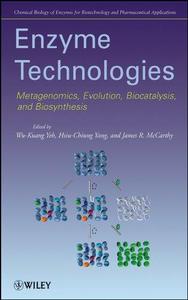 Enzyme Technologies: Metagenomics, Evolution, Biocatalysis, and Biosynthesis By 2010 | 380 Pages | ISBN: 0470286245 | PDF | 10 MB An authoritative review of the latest developments in the chemical biology of enzymes In the first decade of the twenty-first century, enzymes and their multiple applications have played a critical role in the discovery and development of many new therapeutic agents.This book is a coordinated compilation of research expertise and current opinion uniquely focused on enzymes and their properties and applications. Compiled by editors with a combined pharmaceutical experience of over sixty years, the text provides in-depth reviews of recent developments in selective topics on biosynthesis, biocatalysis, and chemical biology of enzymes as it applies to drug discovery, development, and manufacture. The first in a multi-part series on enzymes, this volume features three sections: New Approaches to Find and Modify Enzymes describes the emerging field of metagenomics, presents the practical applications of directed evolution to enzymes and pathways, and explores approaches for the discovery and design of biocatalysts Biocatalytic Applications reviews specific applications of different reactions in producing active pharmaceutical ingredients and surveys recent developments employing enzymes in organic synthesis Biosynthetic Applications goes over successful drug discoveries and developments by combinatorial biosynthesis and reviews the application of combinatorial biosynthesis among multiple compatible hosts These timely discussions, which cover everything from chemical biology of enzymes, to the redesign of binding and catalytic specificities of enzymes, make this volume a valuable tool for keeping up to date. As such, it is an important read for researchers, students, and professors in the study of biotechnology, life sciences, biochemistry, enzymology, medicinal chemistry, and natural products.Content: Chapter 1 Functional Metagenomics as a Technique for the Discovery of Novel Enzymes and Natural Products (pages 1-39): Luke A. Moe, Matthew D. McMahon and Michael G. ThomasChapter 2 Directed Enzyme and Pathway Evolution (pages 41-75): Jacob Vick and Claudia Schmidt?DannertChapter 3 Combining Natural Biodiversity and Molecular?Directed Evolution to Develop New Industrial Biocatalysts and Drugs (pages 77-98): Laurent Fourage, Celine Ayrinhac, Johann Brot, Christophe Ullmann, Denis Wahler and Jean?Marie SonetChapter 4 Principles of Enzyme Optimization for the Rapid Creation of Industrial Biocatalysts (pages 99-124): Richard J. Fox and Lori GiverChapter 5 Enzyme Catalysis in the Synthesis of Active Pharmaceutical Ingredients (pages 125-184): Animesh GoswamiChapter 6 Enzymatic Processes for the Production of Pharmaceutical Intermediates (pages 185-198): David Rozzell and Jim LalondeChapter 7 Novel Developments Employing Redox Enzymes: Old Enzymes in New Clothes (pages 199-249): Kurt Faber, Silvia M. Glueck, Birgit Seisser and Wolfgang KroutilChapter 8 Drug Discovery and Development by Combinatorial Biosynthesis (pages 251-283): Matthew A. DeSieno, Carl A. Denard and Huimin ZhaoChapter 9 Reprogramming Daptomycin and A54145 Biosynthesis to Produce Novel Lipopeptide Antibiotics (pages 285-308): Richard H. Baltz, Kien T. Nguyen and Dylan C. AlexanderChapter 10 Pathway and Enzyme Engineering and Applications for Glycodiversification (pages 309-362): Lishan Zhao and Hung?Wen Liu
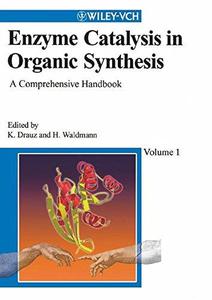 Enzyme Catalysis in Organic Synthesis: A Comprehensive Handbook, Second Edition By 2002 | 1593 Pages | ISBN: 3527299491 | PDF | 47 MB Organic synthesis with enzymes - the only way This comprehensive set gives reliable answers to all questions on enzyme catalysis - from searching for suitable catalytic systems via choosing the optimal reaction conditions to implementing modern synthesis strategies. The long-awaited new edition has been greatly expanded to include new topics and to reflect the latest research, yet retains the clear and practice-oriented presentation found in the first edition. More than a mere data collection, the three volumes provide synthetic chemists with easy access to all the first-hand information necessary for successfully using enzymes: - the latest synthesis methods - example applications arranged according to reaction type - a table of all the important, commercially available enzymes - comprehensive registers for targeted searching according to enzyme, compound, or reaction - current references to the literature In short, an indispensable reference that should be on the shelf of every modern synthesis laboratory. Content: Chapter 1 Introduction (pages 1-39): Maria?Regina KulaChapter 2 Production and Isolation of Enzymes (pages 41-66): Yoshihiko HiroseChapter 3 Rational Design of Functional Proteins (pages 67-93): Tadayuki Imanaka and Haruyuki AtomiChapter 4 Enzyme Engineering by Directed Evolution (pages 95-138): Oliver May, Christopher A. Voigt and Frances H. ArnoldChapter 5 Enzyme Bioinformatics (pages 139-162): Kay HofmannChapter 6 Immobilization of Enzymes (pages 163-184): James Lalonde and Alexey MargolinChapter 7 Reaction Engineering for Enzyme?Catalyzed Biotransformations (pages 185-257): Manfred Biselli, Udo Kragl and Christian WandreyChapter 8 Enzymic Conversions in Organic and Other Low?Water Media (pages 259-285): Peter HallingChapter 9 Enzymatic Kinetic Resolution (pages 287-312): Jonathan M. J. Williams, Rebecca J. Parker and Claudia NeriChapter 10 Enzymes from Extreme Thermophilic and Hyperthermophilic Archaea and Bacteria (pages 313-334): Costanzo Bertoldo and Garabed AntranikianChapter 11 Hydrolysis and Formation of Carboxylid Acid Esters (pages 335-578): Hans Joachim Gais and Fritz TheilChapter 11 Hydrolysis of Epoxides (pages 579-608): Kurt Faber and Romano V. A. OrruChapter 11 Hydrolysis and Formation of Glycosidic Bonds (pages 609-653): Chi?Huey WongChapter 11 Natural Polysaccharide?Degrading Enzymes (pages 653-685): Constanzo Bertoldo and Garabed AntranikianChapter 11 Addition of Water to C=C Bonds (pages 686-697): Marcel WubboltsChapter 12 Hydrolysis of Nitriles (pages 699-715): Birgit SchulzeChapter 12 Formation and Hydrolysis of Amides (pages 716-740): Birgit Schulze and Erik De VroomChapter 12 Hydrolysis of N?Acylamino Acids (pages 741-761): Andreas S. BommariusChapter 12 Hydrolysis and Formation of Hydantoins (pages 761-799): Markus Pietzsch and Christoph SyldatkChapter 12 Hydrolysis and Formation of Peptides (pages 800-865): Hans?Dieter JakubkeChapter 12 Addition of Amines to C = C Bonds (pages 866-872): Marcel WubboltsChapter 12 Transaminations (pages 873-893): J. David Rozzell and Andreas S. BommariusChapter 13 Formation and Cleavage of P?O Bonds (pages 895-929): George M. WhitesidesChapter 14 Formation of C?C Bonds: Sections 14.1 ? 14.6 (pages 931-974): Chi?Huey WongChapter 14 Formation of C?C Bonds: Enzymatic Synthesis of Cyanohydrins (pages 974-989): Martin H. Fechter and Herfried GrienglChapter 15 Reduction of Ketones (pages 991-1033): Kaoru Nakamura and Tomoko MatsudaChapter 15 Reduction of Various Functionalities (pages 1033-1047): Kaoru Nakamura and Tomoko MatsudoChapter 15 Reduction of C=N bonds (pages 1047-1063): Andreas S. BommariusChapter 16 Oxygenation of C?H and C?C Bonds (pages 1065-1108): Sabine Flitsch, Gideon Grogan and D. AshcroftChapter 16 Oxidation of Alcohols (pages 1108-1170): Andreas Schmid, Frank Hollmann and Bruno BuhlerChapter 16 Oxidation of Phenols (pages 1170-1194): Andreas Schmid, Frank Hollmann and Bruno BuhlerChapter 16 Oxidation of Aldehydes (pages 1194-1202): Andreas Schmid, Frank Hollmann and Bruno BuhlerChapter 16 Baeyer?Villiger Oxidations (pages 1202-1245): Sabine Flitsch and Gideon GroganChapter 16 Oxidation of Acids (pages 1245-1250): Andreas Schmid, Frank Hollmann and Bruno BuhlerChapter 16 Oxidation of C?N Bonds (pages 1250-1261): Andreas Schmid, Frank Hollmann and Bruno BuhlerChapter 16 Oxidation at Sulfur (pages 1262-1266): Karl?Heinz van PeeChapter 16 Halogenation (pages 1267-1280): Karl?Heinz van PeeChapter 17 Isomerazation (pages 1281-1332): Nobuyoshi Esaki, T. Kurihara and K. SodaChapter 18 Introduction and Removal of Protecting Groups (pages 1333-1417): Dieter Kadereit, Reinhard Reents, Duraiswamy A. Jeyaraj and Herbert WaldmannChapter 19 Replacing Chemical Steps by Biotransformations: Industrial Application and Processes Using Biocatalysis (pages 1419-1459): Andreas LieseChapter 20 Tabular Survey of Commercially Available Enzymes (pages 1461-1518): Peter Rasor  Environmental Physiology of Livestock By 2012 | 348 Pages | ISBN: 0813811767 | PDF | 4 MB Environmental stress is one of the most significant factors affecting livestock performance and health, and it is only expected to increase with effects of global warming. Environmental Physiology of Livestock brings together the latest research on environmental physiology, summarizing progress in the field and providing directions for future research. Recent developments in estimating heat stress loads are discussed, as well as key studies in metabolism, reproduction, and genetic expressions. Environmental Physiology of Livestock begins with a survey of current heat indexing tools, highlighting recent discoveries in animal physiology, changes in productivity levels, and new technologies available to better estimate stress response. Using this synopsis as a point of orientation, later chapters hone in on major effects of heat stress, including changing metabolic pathways and nutrient requirements, endocrine regulation of acclimation to environmental stress, and reduced reproductive performance. The text concludes with a thorough discussion of environmental effects on gene expressions, providing important insight for future breeding practices. Environmental Physiology of Livestock is a globally contributed volume and a key resource for animal science researchers, geneticists, and breeders.Content: Chapter 1 From Heat Tolerance to Heat Stress Relief: An Evolution of Notions in Animal Farming (pages 1-16): Amiel BermanChapter 2 Physiological Basics of Temperature Regulation in Domestic Animals (pages 17-34): Donald E. SpiersChapter 3 Heat Stress and Evaporative Cooling (pages 35-48): Kifle G. GebremedhinChapter 4 Regulation of Acclimation to Environmental Stress (pages 49-63): Kajal Sankar Roy and R. J. CollierChapter 5 Environment and Animal Well?Being (pages 65-80): S. D. EicherChapter 6 Effects of Environment on Metabolism (pages 81-100): Lance Baumgard and Robert P. RhoadsChapter 7 Impact of Hot Environment on Nutrient Requirements (pages 101-128): Umberto BernabucciChapter 8 Effects of Environment on Animal Health: Mechanisms and Regulatory Inputs (pages 129-164): Ted H. Elsasser, Cong?Jun Li, Jessica Shaffer and Robert J. CollierChapter 9 Effect of Environment on Immune Functions (pages 165-179): Nicola LaceteraChapter 10 Strategies for Improvement of Thermal and Reproductive Responses under Heat Stress (pages 181-198): David Wolfenson and William W. ThatcherChapter 11 Prospects for Improving Fertility during Heat Stress by Increasing Embryonic Resistance to Elevated Temperature (pages 199-208): Peter J. HansenChapter 12 Environmental Heat Stress Impairs Placental Function, Fetal Growth and Development, and Postnatal Performance in Livestock (pages 209-228): Dustin T. Yates, Xiaochuan Chen and Sean W. LimesandChapter 13 Effects of Photoperiod on Domestic Animals (pages 229-242): Geoffrey E. Dahl and Izabella M. ThompsonChapter 14 Rethinking Heat Index Tools for Livestock (pages 243-265): J. B. Gaughan, T. L. Mader and K. G. GebremedhinChapter 15 Strategies to Reduce the Impact of Heat and Cold Stress in Dairy Cattle Facilities (pages 267-288): John R. Smith and J. P. HarnerChapter 16 Genotype by Environment Interactions in Commercial Populations (pages 289-307): Ignacy Misztal and Peter LovendahlChapter 17 Responses of Poultry to Environmental Challenges (pages 309-335): J. Brake and S. Yahav
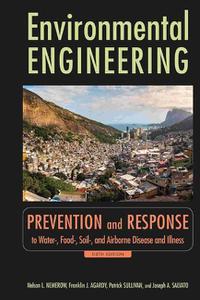 Environmental Engineering: Prevention and Response to Water-, Food-, Soil-, And Air-Borne Disease and Illness, Sixth Edition By 2009 | 393 Pages | ISBN: 0470083042 | PDF | 5 MB First published in 1958, Salvato's Environmental Engineering has long been the definitive reference for generations of sanitation and environmental engineers. Approaching its fiftieth year of continual publication in a rapidly changing field, the Sixth Edition has been fully reworked and reorganized into three separate, succinct volumes to adapt to a more complex and scientifically demanding field with dozens of specializations. Updated and reviewed by leading experts in the field, this revised edition offers new coverage of appropriate technology for developing countries. Stressing the practicality and appropriateness of treatment, the Sixth Edition provides realistic solutions for the practicing public health official or environmental engineer. This volume, Environmental Engineering: Prevention and Response to Water-, Food-, Soil-, and Airborne Disease and Illness, Sixth Edition covers: Disease transmission by contaminated water Food-borne diseases Control of diseases of the air and land Appropriate technology for developing countries Environmental emergencies and emergency preparedness Content: Chapter 1 Disease Transmission by Contaminated Water (pages 1-98): Richard F. UnzChapter 2 Control of Diseases of the Air and Land (pages 99-173): Nabarun DasguptaChapter 3 Foodborne Diseases (pages 175-211): Nabarun DasguptaChapter 4 Appropriate Technology for Developing Countries (pages 213-334): Harvey F. LudwigChapter 5 Environmental Emergencies and Emergency Preparedness (pages 335-365): Piero M. Armenante and James P. Mack 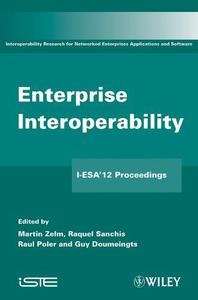 Enterprise Interoperability: I-ESA'12 Proceedings By 2012 | 432 Pages | ISBN: 184821426X | PDF | 31 MB In a fast changing world governed by innovative Enterprise Services and the Future Internet, the issue of Enterprise Interoperability is no longer limited to the interoperation of systems within a single company, but has become a much greater multi-view issue of interoperability throughout a Network of Enterprises.This book contains the proceedings of 13 workshops presented as short papers and discussions held at each workshop. The workshops were co-located with theI-ESA'12 Conference organized by the Polytechnic University of Valencia, Spain.Complementary to the conference program, the workshops aimed at exploiting new issues, challenges and solutions for Enterprise Interoperability. The scope of the workshops spanned a wide range of interoperability issues in Service Science and Innovation, Model Driven Interoperability, Service Oriented Architectures, Factories of the Future, Enterprise Networks and Management, SME Aspects and Standards.Content:
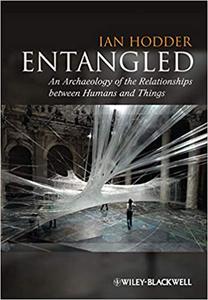 Ian Hodder, "Entangled: An Archaeology of the Relationshipsbetween Humans and Things" English | ISBN: 0470672129 | 2012 | 272 pages | AZW3 | 2 MB A powerful and innovative argument that explores the complexity of the human relationship with material things, demonstrating how humans and societies are entrapped into the maintenance and sustaining of material worlds
 Entangled: An Archaeology of the Relationships between Humans and Things By Ian Hodder(auth.) 2012 | 264 Pages | ISBN: 0470672110 | PDF | 3 MB A powerful and innovative argument that explores the complexity of the human relationship with material things, demonstrating how humans and societies are entrapped into the maintenance and sustaining of material worldsArgues that the interrelationship of humans and things is a defining characteristic of human history and cultureOffers a nuanced argument that values the physical processes of things without succumbing to materialismDiscusses historical and modern examples, using evolutionary theory to show how long-standing entanglements are irreversible and increase in scale and complexity over timeIntegrates aspects of a diverse array of contemporary theories in archaeology and related natural and biological sciencesProvides a critical review of many of the key contemporary perspectives from materiality, material culture studies and phenomenology to evolutionary theory, behavioral archaeology, cognitive archaeology, human behavioral ecology, Actor Network Theory and complexity theoryContent: Chapter 1 Thinking About Things Differently (pages 1-14): Chapter 2 Humans Depend on Things (pages 15-39): Chapter 3 Things Depend on Other Things (pages 40-63): Chapter 4 Things Depend on Humans (pages 64-87): Chapter 5 Entanglement (pages 88-112): Chapter 6 Fittingness (pages 113-137): Chapter 7 The Evolution and Persistence of Things (pages 138-157): Chapter 8 Things happen ... (pages 158-178): Chapter 9 Tracing the Threads (pages 179-205): Chapter 10 Conclusions (pages 206-222):  English Translation and Classical Reception: Towards a New Literary History By Stuart Gillespie(auth.), Maria Wyke(eds.) 2011 | 220 Pages | ISBN: 1405199016 | PDF | 2 MB English Translation and Classical Reception is the first genuine cross-disciplinary study bringing English literary history to bear on questions about the reception of classical literary texts, and vice versa. The text draws on the author's exhaustive knowledge of the subject from the early Renaissance to the present. The first book-length study of English translation as a topic in classical reception Draws on the author's exhaustive knowledge of English literary translation from the early Renaissance to the presentArgues for a remapping of English literary history which would take proper account of the currently neglected history of classical translation, from Chaucer to the presentOffers a widely ranging chronological analysis of English translation from ancient literaturesPreviously little-known, unknown, and sometimes suppressed translated texts are recovered from manuscripts and explored in terms of their implications for English literary history and for the interpretation of classical literature Content: Chapter 1 Making the Classics Belong: A Historical Introduction (pages 1-19): Chapter 2 Creative Translation (pages 20-32): Chapter 3 English Renaissance Poets and the Translating Tradition (pages 33-46): Chapter 4 Two?Way Reception: Shakespeare's Influence on Plutarch (pages 47-59): Chapter 5 Transformative Translation: Dryden's Horatian Ode (pages 60-75): Chapter 6 Statius and the Aesthetics of Eighteenth?Century Poetry (pages 76-92): Chapter 7 Classical Translation and the Formation of the English Literary Canon (pages 93-103): Chapter 8 Evidence for an Alternative History: Manuscript Translations of the Long Eighteenth Century (pages 104-122): Chapter 9 Receiving Wordsworth, Receiving Juvenal: Wordsworth's Suppressed Eighth Satire (pages 123-149): Chapter 10 The Persistence of Translations: Lucretius in the Nineteenth Century (pages 150-162): Chapter 11 'Oddity and struggling dumbness': Ted Hughes's Homer (pages 163-179): Chapter 12 Afterword (pages 180-182):  English Renaissance Drama By 2006 | 326 Pages | ISBN: 063122629X | PDF | 2 MB The book considers the London theatrical culture which took shape in the 1570s and came to an end in 1642.Places emphasis on those plays that are readily available in modern editions and can sometimes to be seen in modern productions, including Shakespeare. Provides students with the historical, literary and theatrical contexts they need to make sense of Renaissance drama. Includes a series of short biographies of playwrights during this period. Features close analyses of more than 20 plays, each of which draws attention to what makes a particular play interesting and identifies relevant critical questions. Examines early modern drama in terms of its characteristic actions, such as cuckolding, flattering, swaggering, going mad, and rising from the dead. Content: Chapter 1 The Set?Up (pages 15-45): Chapter 2 Background Voices (pages 47-92): Chapter 3 The Writers (pages 93-124): Chapter 4 Key Plays (pages 125-260): Chapter 5 Actions that A Man Might Play (pages 261-311): 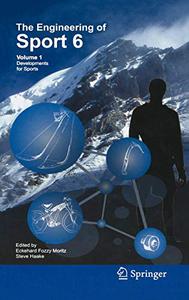 Engineering of Sport 6 Volume 1: Developments for Sports by Eckehard Fozzy Moritz, Steve Haake English | PDF | 2006 | 472 Pages | ISBN : 0387317732 | 25.4 MB The Engineering of Sport 6 |